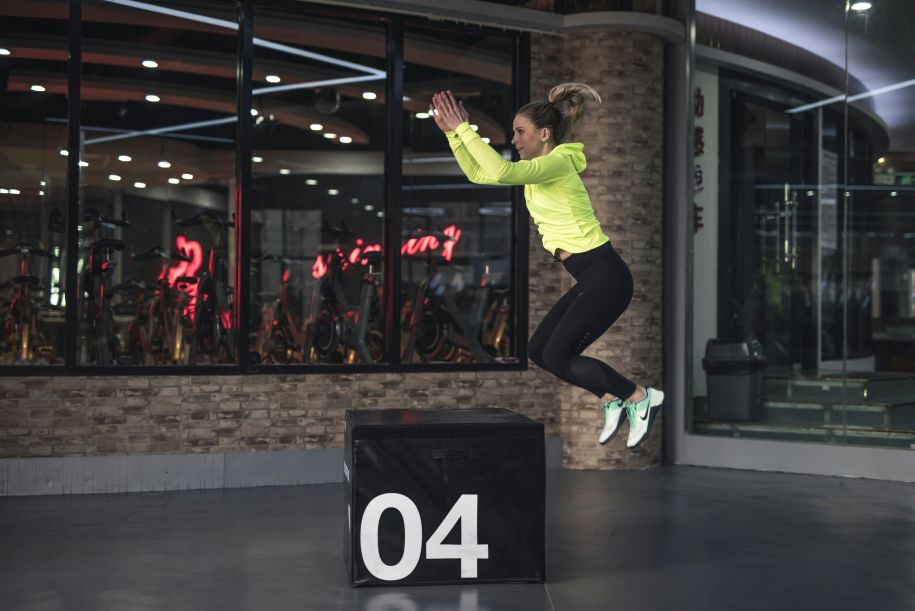
Yuri Verkhoshansky was a Russian scientist and professor who discovered plyometrics in the late 1960’s. He helped athletes train for the Olympics, and taught the shock method which consisted of sharp, compulsory muscular tension initiated by the body’s impact. He has several books available on Amazon. Verkhoshansky pioneered plyometrics to improve athletic performance.
Medical News Today defines plyometrics as a form of exercise that uses powerful, rapid movements to help increase speed, power, and strength. These bursts often include a jumping motion that develops the coordination of muscle movement. Some also refer to it as “jump training.”
Benefits of Plyometrics:
Improved strength and power
Increased agility and coordination
Enhanced cardiovascular fitness
Functional fitness (exercise that supports your life – walking, pushing, pulling, bending, squatting, lunging)
Athletes who use explosive movements like quick bursts of speed or repetitive change of direction are drawn to plyometric exercises. Soccer, volleyball, tennis players, and sprinters are a few worth mentioning. Plyometrics allows them to run and jump faster while increasing their overall mobility. Basketball players aim to boost their vertical jump and tennis players develop their reactive strength. This type of training helps all athletes refine their overall sporting ability.
When most people think of plyometrics, they assume that they only work the lower body. If you notice the list below, you’ll see upper body plyometrics also which means you can get a full body workout with a combination of these exercises.
These exercises are appealing because many can be executed without equipment, and they can be done almost anywhere. This form of training can be performed outdoors, in hotels while traveling, at the gym, or at home. They can be worked into any exercise program to add variety and intensity. Many people say they don’t have time or the equipment to work out so these exercises along with a bodyweight routine leave no room for excuses. They are more than convenient for all of us!
Beginners should ease into these movements to avoid injury. A good warm up to prepare muscles and joints is a good idea. Soft landings will help reduce impact. Start with low-impact variations and progress to higher intensity as you get stronger. Repetitions should be limited to maintain proper form. Talk to your doctor to see if these exercises are right for you or work with a personal trainer for proper technique. Many people can benefit from these exercises (listed below.) Further down is a list of exercises for you to try.
Athletes – sports requiring explosiveness
Fitness enthusiasts – fat loss, muscle definition, cardiovascular health
Rehabilitation patients – rebuilding strength, joint stability
Older adults – improved bone density, balance, stability
People training for specific goals – runners, gymnasts, dancers, weightlifters
Legs:
Jump squats
Lateral skaters
Box jumps
Broad jumps
Upper Body:
Clap push-ups
Medicine ball chest pass
Wall slams
Core:
Medicine ball slams
Russian twists
Full Body:
Burpees with jump
Jump lunges
Mountain climbers
I’ve known about plyometrics for a long time but wish I would have done them consistently over the years. They are back on my radar now, so I’ll be adding them into the mix. Middle-aged women who are perimenopausal or in menopause may see improvements in bone health, metabolism, and mood when they perform these types of movements. It’s also good for the nervous system because these exercises enhance neuromuscular coordination.
I recently started including plyometrics in my strength training routine. Jump squats were already a great exercise, but then I added a 20-pound kettle bell, which made them even more challenging. Increasing intensity and weight will help you improve your strength and stamina. You can experiment with adding weight once you get comfortable. Here are a few to get you started:
Beginner Plyometric Exercises:
Jump Rope
Jumping Jacks
Star Jumps
High Knees
Depth Jumps
Jump Lunge
Toe Taps on Bench or Chair
In conclusion, plyometric exercises are a powerful and versatile training method that can help individuals of all fitness levels. By focusing on explosive movements, they improve muscular strength, power, coordination, and cardiovascular fitness. Whether you’re an athlete looking to enhance performance, a fitness enthusiast aiming to burn calories and build muscle, or a beginner seeking to improve functional strength, plyometric exercises can be tailored to meet your needs.
With proper technique, gradual progression, and appropriate recovery, plyometrics can be a safe and effective addition to any workout routine. Embracing this dynamic form of training can lead to greater physical performance, injury prevention, and overall fitness.
Sign up for my free monthly newsletter at the bottom of my blog or reach out anytime to Kim at nourishandflex@gmail.com
Photo by: Javon Swaby

